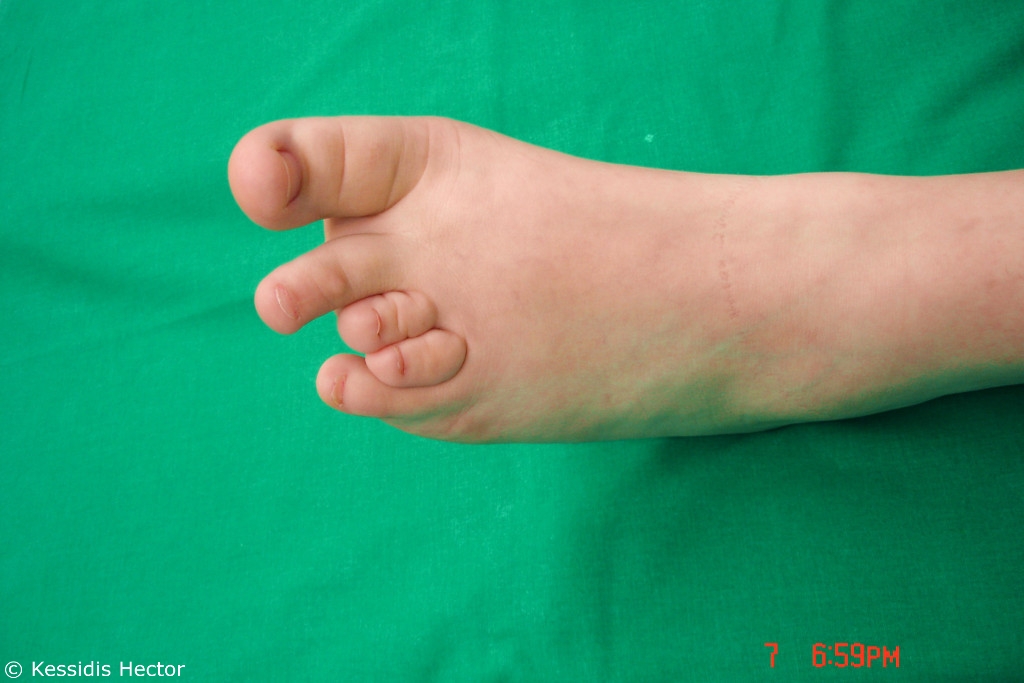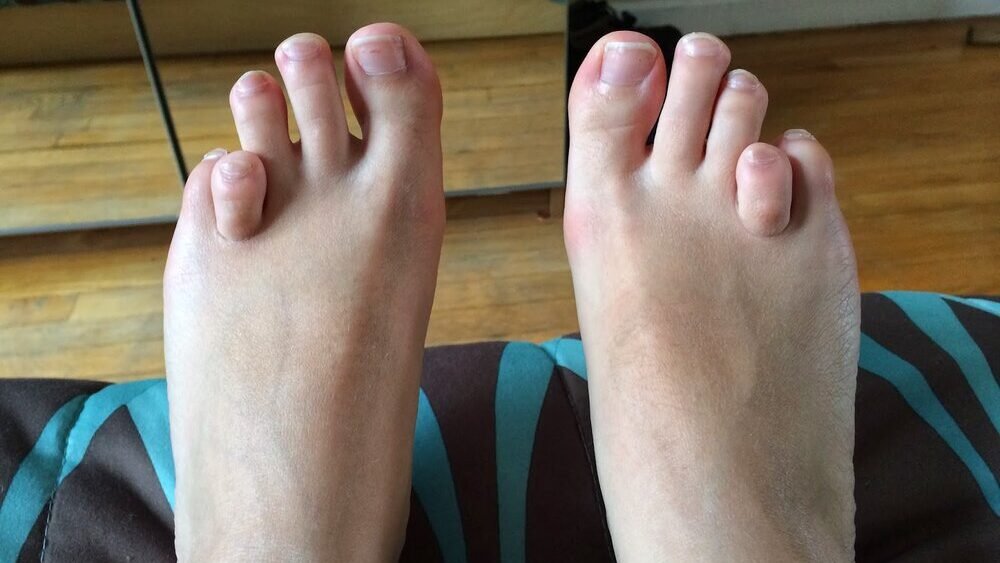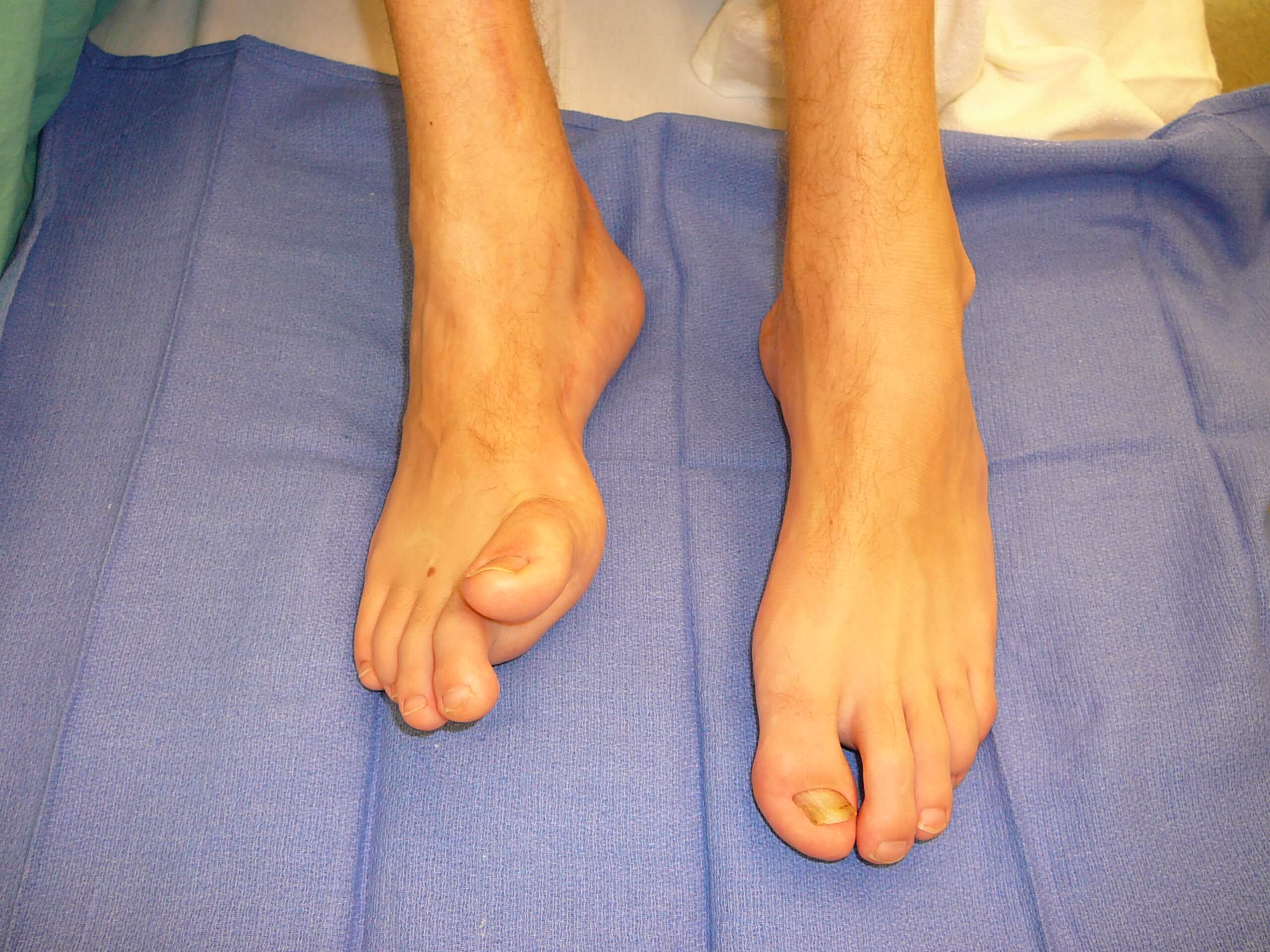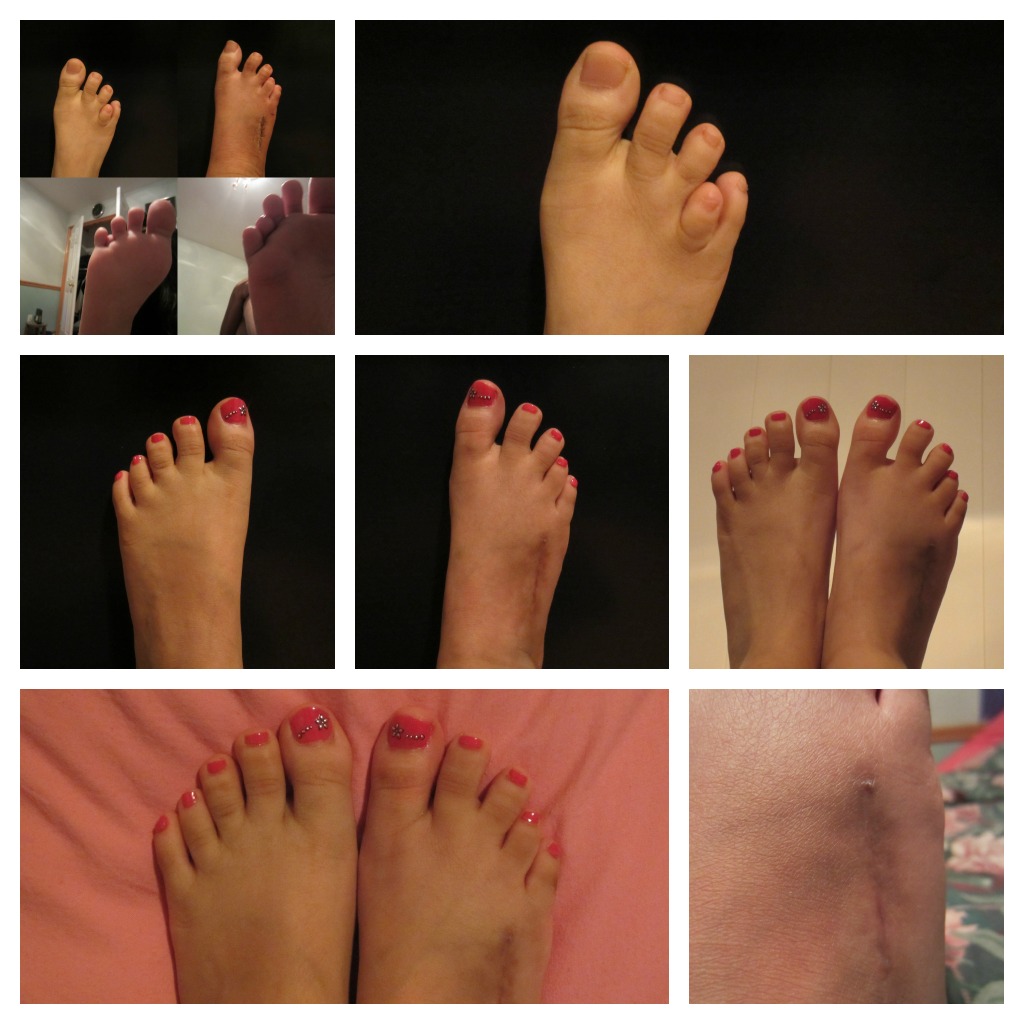
Brachymetatarsia & Polydactyly Causes, Diagnosis, & Treatment
Brachymetatarsia is a congenital osseous and soft tissue deformity of a ray(s) of the foot. Because there is no particular consensus of methodology of lengthening for brachymetatarsia, the authors introduce a comprehensive anatomic classification and a surgical guide to treatment of each classification type. This classification combines the number of the metatarsal(s) affected and the letter(s.

Short Toe Surgery Before and After Photos, Brachymetatarsia Surgery
Brachymetatarsia is a rare foot deformity caused by the premature closure of the metatarsal physis, leading to a shortened metatarsal. It can be diagnosed when one metatarsal ends 5 mm or more proximal to the parabolic arc.1 The deformity may be congenital, idiopathic, or secondary to surgery or trauma.

Congenital Brachymetatarsia Kessidis Hector
Brachymetatarsia (BM), or hypoplastic metatarsal, is an abnormal shortening of one or more metatarsal bones with a female-to-male ratio of 10.53:1. Different causes are described in the literature, such as congenital, acquired, or iatrogenic, associated with different conditions and syndromes. Its presence may develop deformity and pain.

brachymetatarsia pre op Foot Doctor San Diego / La Jolla Podiatrist
Brachymetatarsia: One-stage Versus Two-Stage Procedures Foot Ankle Clin. 2019 Dec;24(4):677-687. doi: 10.1016/j.fcl.2019.08.010. Epub 2019 Oct 8. Authors André Perin Shecaira 1 , Rodrigo Mota Pacheco Fernandes 2 Affiliations 1 Instituto Nacional de Traumatologia e Ortopedia, Rio de Janeiro, Brazil. Electronic address: [email protected].

My Journey through Brachymetatarsia Surgery! Over a Year Later How I
Literature concerning the surgical management of brachymetatarsia was identified using the PubMed and Google Scholar databases. Patient Presentation. We describe two female patients aged 20 and 26 years who underwent one stage lengthening surgery of the fourth toe with isolated brachymetatarsia using an iliac bone graft and internal fixator plate.

Pin on Brachymetarsia a condition in which I suffered with for years.
Brachymetatarsia is a rare congenital deformity, predominant in females (92.5%), 1 in which the metatarsus of the foot is shortened by ≥ 5 mm in relation to the transverse arch of the foot. 2 It mainly affects the fourth metatarsal, but the pathology can occur in any metatarsal bone.

Brachymetatarsia Treatment Foot Doctor Kirkland, Everett, and Renton, WA
Brachymetatarsia is a condition that can affect the metatarsal bones of the foot. The most common location is the fourth metatarsal. When looking at the foot, the affected toe looks short. This condition can affect either both feet, or just one foot, and it is more common in women than in men. What are the symptoms of brachymetatarsia?

Short Toe Surgery Before and After Photos, Brachymetatarsia Surgery
Brachymetatarsia (BM), or hypoplastic metatarsal, is an abnormal shortening of one or more metatarsal bones with a female-to-male ratio of 10.53:1. Different causes are described in the literature, such as congenital, acquired, or iatrogenic, associated with different conditions and syndromes.

BRACHYMETATARSIA
Padding is used to protect the toe from the top of the shoe, and specialized orthotics can be used to relieve pressure from the other toes. Surgical treatment aims to correct the deformity via lengthening of the affected metatarsal. There are currently two surgical techniques for correcting brachymetatarsia: acute and gradual lengthening.

My Journey through Brachymetatarsia Surgery! Over a Year Later How I
Brachymetatarsia is a bone condition in which one or more of someone's toes is shorter than the surrounding toes. Usually this affects the fourth, first or fifth toes.1 It can occur on one side or it can affect both feet. It is not actually the toe bones that are short but rather the long bone attached to the toe (metatarsal) that is short. Cause

Short Toe Surgery Before and After Photos, Brachymetatarsia Surgery
For diagnostic purposes, brachymetatarsia is a shortening of the metatarsal superior to 5 mm. This measurement is obtained through weight-bearing radiographs of both feet.

GET RID OF BRACHYMETATARSIA SUBLIMINAL EXTREMELY POWERFUL AND VERY FAST
Brachymetatarsia is a rare congenital condition caused by premature epiphyseal closure of the metatarsals that presents with shortening of one or more metatarsals. Diagnosis is made clinically with hypoplasia and shortening of most commonly the 4th metatarsal. Treatment is observation with shoe modifications for mild cases.

Paley Orthopedic & Spine Institute on Twitter "Check out this amazing
After IRB approval, a retrospective cohort of patients who had undergone DO for brachymetatarsia with a minimum follow‑up of 1year was identified. During the period from 4/2008 to 5/2013, a total of 44 MTs in 27 patients (2 males, 25 females), mean age 37.09 ± 13.98 years, who had undergone DO in our institution by the two most senior

Brachymetatarsia Foot Doctor San Diego / La Jolla Podiatrist
Distraction osteogenesis has been widely used to treat brachymetatarsia and has been reported to have. a distance of approximately 5 mm immediately after the corticotomy and assessing the direction of the distraction with intraoperative fluoroscopy. The metatarsal is then returned to its original length for seven days before lengthening is.

Brachymetatarsia my journey
Brachymetatarsia is a rare malformation that causes one or more toes to be abnormally short. The condition is characterized by a metatarsal arch shortness of more than 5 mm. The condition is more common in females, and the incidence reported in the literature ranges from 0.02% to 0.05%.

Diagnosis, Causes and Treatment of Brachymetatarsia MASS4D® Foot
Brachymetatarsia is defined by an abnormal shortening of the metatarsal bone. This rare condition is mostly primary and congenital. Consequences of this malformation are both esthetic and functional, due to pain and mechanical problems in the forefoot. Surgical management is an important part of patient care.